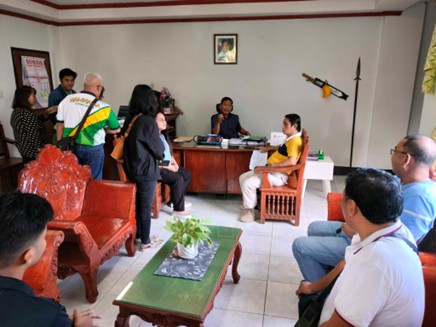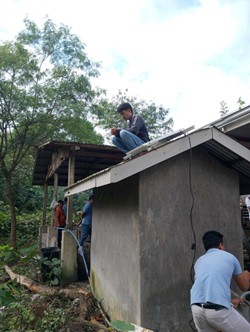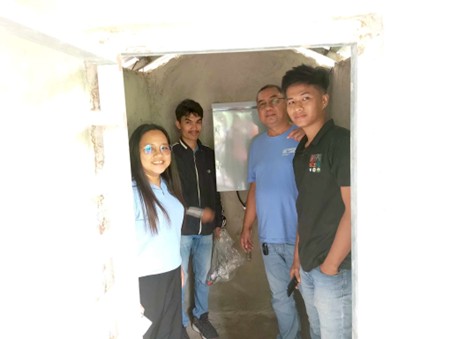Groundwater Monitoring Sensor Installation at Aglipay, Quirino
The installation of the groundwater monitoring system in Aglipay, Quirino, is part of a collaborative project between the Department of Science and Technology (DOST) and Isabela State University (ISU) aimed at enhancing the monitoring and management of groundwater resources. This project seeks to provide real-time data on groundwater levels and quality, ensuring the sustainability of local water resources. By implementing this system, the local government can make informed decisions on water resource management, helping to mitigate potential water shortages and environmental impacts.
On January 22, 2025, the SWIM technical staff, represented by Engr. Kathleen Palma, Engr. Wilfredo Bose, Engr. Glen Batoon, and Engr. Bermiel Allen Tuppil, traveled to Aglipay, Quirino, for the installation of a groundwater monitoring system in the vicinity of the municipal hall.
Upon arrival, the SWIM team proceeded to the mayor’s office to coordinate with Mayor Jerry T. Agsalda. They were joined by Engr. Aphroditey Dumahin to await the official go signal for the installation. Once approval was granted, the team, along with Engr. Dumahin and other local government office personnel, proceeded to the designated installation site. At the site, the team prepared the system components, which included a battery, solar panel, sensors, wires, and instrument housing. The installation process involved ensuring the correct connection of all wiring and components to guarantee proper functionality.
Additionally, the SWIM team conducted training for the local personnel, explaining how to restart the instrument in case it goes offline. After successfully completing the installation, the team verified the system’s operation and functionality.
Following the installation, the team proceeded to Saguday, Quirino, to check the status of the Memorandum of Agreement (MOA) regarding the same collaboration project. This initiative marks a step toward enhancing groundwater monitoring capabilities in the region, ensuring sustainable water resource management through technical support and collaboration between SWIM and local government units.





